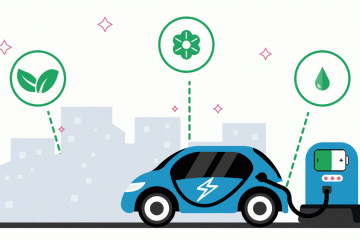The debate around air quality is
one of the hottest topics doing rounds in almost all social media platforms in recent times. Many researchers, literary
experts, scientists,and environmentalists
have projected their viewpoint and opinions on the same and have even suggested
reformatory measures to bring about a change.
But things don’t seem to have
changed. In fact, the condition has been steadily deteriorating over the last
decade. This can mean two things: Either air pollution is not as simple as we
thought or our approach towards it is wrong. Whichever reason it maybe, it is time we understood it better and found out alternative ways of managing it.
So how do we go about it? We at
Ambee believe that the first step in eradicating any problem is to know its root cause and to quantify it. Knowing only the root cause is not enough if you don’t know just how much it is affecting the environment. Quantifying bad air would give us an insight into what is getting released into the environment and at what rate. This would lead to better policies and also a more informed decision making resulting in a cleaner and a more breathable environment.
The Need, the Reality, and the Lag
When this is
the situation, what is stopping us, one
may ask. The answer is nothing. While many government agencies, policymakers,
environmentalists,and researchers are
measuring and quantifying air pollution, the data obtained is just not enough.
This is the
sad reality of this situation. While air pollution and the number of cities
getting affected by it is increasing every day, the number of data collection
centers or ambient air quality monitoring stations in India is not enough to
satiate the demand.
According to the
World Health Organization the recommended number of air quality monitoring stations should be one per square kilometer. More conservative estimates peg this at on per every 15 square kilometers. So a city the size of 1000 sq km would require 1000/15 or 67 monitoring stations. This number is when there is uniform air quality,and there is no industrial activity or pollution surge in any part of the city (these would require dedicated centers). However, as of now, we have only 731 stations that are in operation in around 312 cities. These stations monitor based on a 4 hourly sampling of gaseous pollutants and an 8-hour sampling of particulates, twice a week. So, the data is neither real-time nor adequate.
This is where the problem starts. What we need is nowhere close to what we have,and what we have is also not adequate in terms of reliability and accuracy. The solution? Open source monitoring of air quality. While the ambient air pollution monitoring stations can give you a brief overview of how the air quality prevalent in a city, these smaller, more accurate and area-specific data can help I measuring air quality more effectively. Every individual carrying our device is a potential data center who can help policymakers with more reliable, real-time,and area-specific data that can help them make better reformatory policies.
Come join this new era of pollution monitoring. Be a part of the change. Invest in our air quality monitoring device and check the air around your home now.
Follow this link to know more and order. Also available on

.
 .
.




